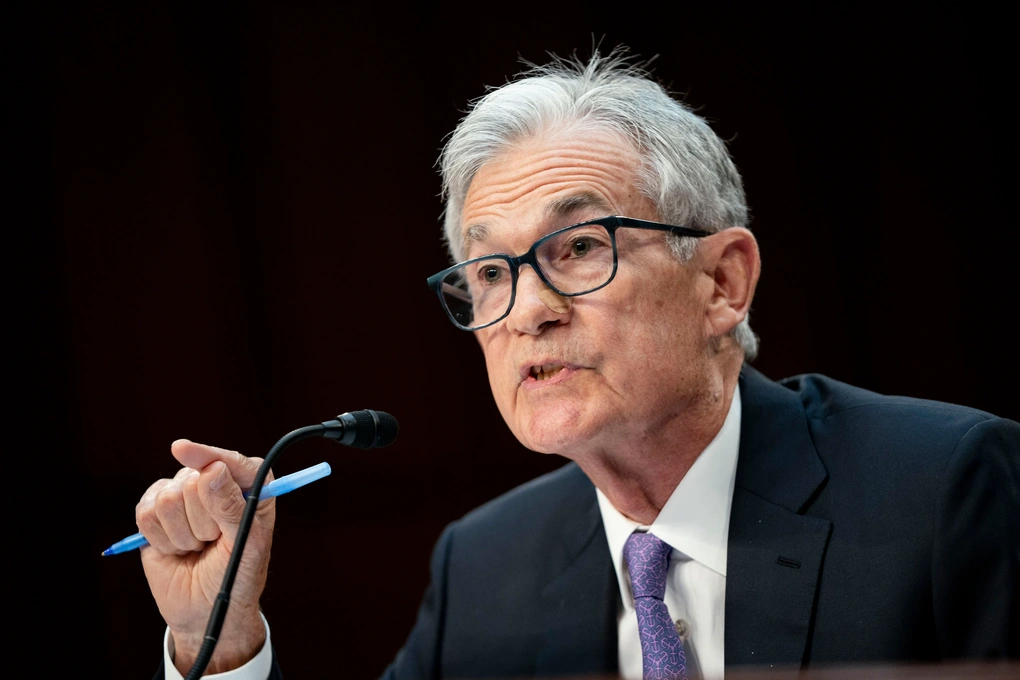In a tense hearing before the House Financial Services Committee, Jerome Powell, the most powerful man in finance in the world , delivered a clear and unmistakable message: The Fed is in no hurry.
“We are well positioned to continue to wait and see how the economy develops before considering any adjustments to monetary policy,” Mr. Powell said emphatically.
The comments were a blow to expectations for an early rate cut, especially from President Donald Trump and his allies in Congress . It showed that, at least in the short term, the Fed's top priority is to contain the potential inflation risk from new tariffs and oil price shocks, rather than rush to ease policy to support an economy that is showing signs of slowing.
Political storm from the White House and Capitol Hill
The Fed's patience is testing the patience of President Donald Trump. Since returning to power, Mr. Trump has repeatedly attacked Chairman Powell, whom he appointed during his first term.
The president’s argument is that maintaining high interest rates is costing the US hundreds of billions of dollars each year in interest payments on its massive public debt. He has demanded that the Fed cut interest rates drastically, even by 2-3 percentage points. This pressure does not stop at criticism, Mr. Trump has repeatedly hinted at the possibility of firing Mr. Powell, an unprecedented action that could seriously damage the Fed’s independence.
Political pressure has extended beyond the White House to Congress, creating a bipartisan standoff. Republicans have generally supported Mr. Trump’s calls for lower interest rates, while Democrats have tended to favor a cautious Fed stance, emphasizing the need for independence from political influence.
In the face of these storms, Mr. Powell has remained steadfast. He asserted that the Fed’s independence is protected by law and has broad support in Congress. He stressed that the Fed’s top priority is “maintaining stable long-term inflation expectations,” even when faced with difficult choices between its twin goals of price stability and full employment.

According to the Fed Chairman, new tariffs this year could increase prices and weaken economic growth (Photo: Getty).
Dissenting Voices from Within
Mr. Powell's challenges do not come from outside. Even within the Federal Open Market Committee (FOMC), the Fed's policymaking body, cracks in views are beginning to appear.
Some Trump appointees are now advocating for an earlier cut. Governor Christopher Waller recently called for a rate cut at the next meeting, arguing that the inflation risk from tariffs is not as great as initially feared. Likewise, Vice Chair for Supervision Michelle Bowman has also expressed support for a rate cut at the July meeting, provided inflation remains under control.
These disagreements reflect a growing debate within the Fed, reflecting the uncertainty of the economy. A recent “dot plot” chart shows FOMC members are divided, with one group wanting to keep rates unchanged or cut rates just once this year, while another group still expects two or more cuts.
That puts Mr. Powell in the position of a Fed captain navigating choppy waters, having to reconcile internal views while facing external storms.
The geopolitical "card" and the oil price shock
Overshadowing all the economic and political calculations is a huge uncertainty: the simmering conflict between Israel and Iran. Escalating tensions in recent weeks have raised concerns that Iran could close the Strait of Hormuz, a waterway through which about 25% of the world’s oil is shipped.
Such a scenario would be catastrophic, potentially sending oil and gasoline prices soaring, causing a severe inflationary shock to the US and global economies. Although oil prices have cooled since the ceasefire was declared, the situation remains a “powder keg.” Any escalation could send energy prices soaring again.
Oxford Economics warns that while the ceasefire may be fragile, oil prices will continue to fall unless attacks on energy infrastructure occur. However, this scenario could change in an instant.
This uncertainty, combined with the possibility of a rebound in oil prices, reinforces the case for the Fed to proceed cautiously. “If crude oil prices rise significantly, people will feel it,” Mr. Powell concluded in a brief but powerful way.
The Road Ahead: What's the Way for the Number 1 Economy?
The Fed's benchmark interest rate remains at 4.25-4.5%. The US economy, Mr. Powell said, remains "in a solid state," with unemployment at a historic low of 4.2% and the Fed's preferred inflation reading at 2.3% - just above its 2% target.
However, the June consumer confidence report showed that sentiment was weakening, mainly due to concerns about inflation and high prices.
Chairman Powell and his colleagues are walking a very narrow path.
If they cut rates too soon to ease political pressure or support growth, they risk rekindling inflation, especially if energy prices spike or the impact of tariffs is greater than expected. But if they keep rates high for too long, they could inadvertently weaken economic activity, hurt an already strong labor market and push the economy into recession.
Economists are divided on the path forward. Some believe the Fed is unlikely to cut rates before the end of the summer, while others believe that if there is further evidence of labor market weakness, the Fed could act sooner.
In this complex context, all eyes will be on Washington. In his hot seat, Jerome Powell is facing the most difficult problem of his career: how to protect the economy while preserving the sacred independence of the Fed in the face of unprecedented storms.
Source: https://dantri.com.vn/kinh-doanh/ghe-nong-fed-powell-cang-minh-giu-lap-truong-giua-bao-to-20250625062612729.htm



![[Photo] Many streets in Hanoi were flooded due to the effects of storm Bualoi](https://vphoto.vietnam.vn/thumb/1200x675/vietnam/resource/IMAGE/2025/9/29/18b658aa0fa2495c927ade4bbe0096df)

![[Photo] General Secretary To Lam receives US Ambassador to Vietnam Marc Knapper](https://vphoto.vietnam.vn/thumb/1200x675/vietnam/resource/IMAGE/2025/9/29/c8fd0761aa184da7814aee57d87c49b3)
![[Photo] National Assembly Chairman Tran Thanh Man chairs the 8th Conference of full-time National Assembly deputies](https://vphoto.vietnam.vn/thumb/1200x675/vietnam/resource/IMAGE/2025/9/29/2c21459bc38d44ffaacd679ab9a0477c)
![[Photo] General Secretary To Lam attends the ceremony to celebrate the 80th anniversary of the post and telecommunications sector and the 66th anniversary of the science and technology sector.](https://vphoto.vietnam.vn/thumb/1200x675/vietnam/resource/IMAGE/2025/9/29/8e86b39b8fe44121a2b14a031f4cef46)




























































































Comment (0)